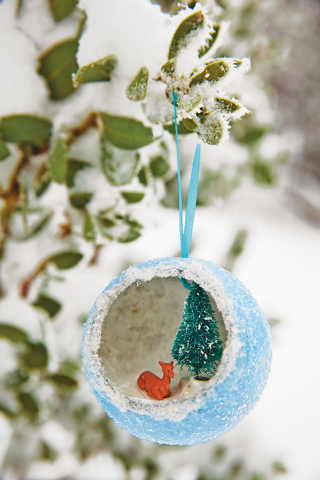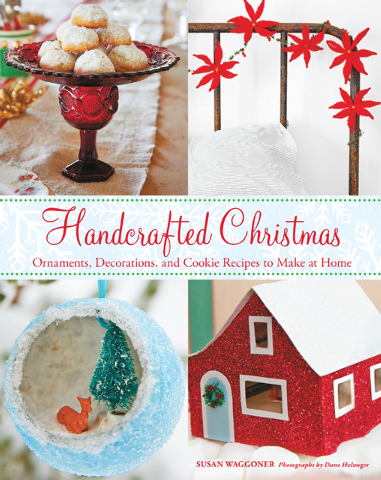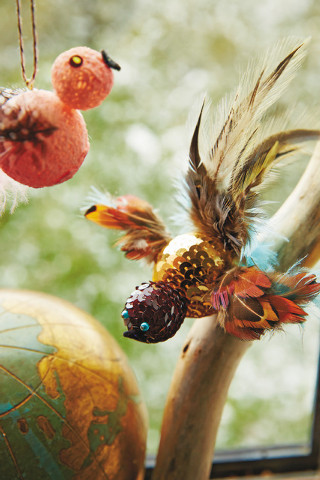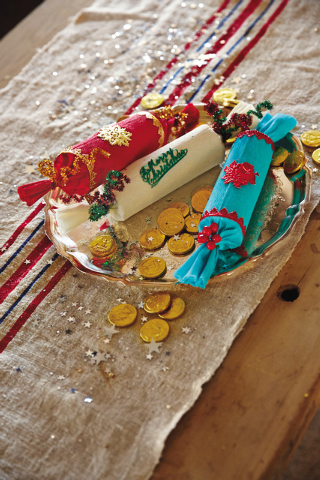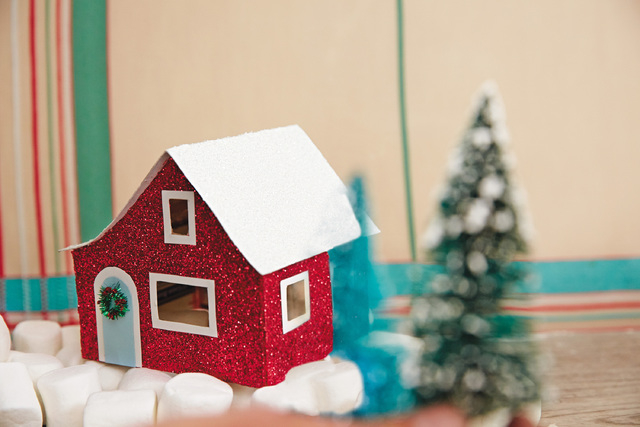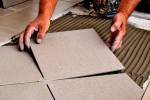Homemade Memories
They just don’t make holiday decorations like they used to.
This likely saddens no one more than author Susan Waggoner.
She recalls the big, fanciful family Christmas celebrations she attended as a child during the 1950s and ’60s in her recently published book, “Handcrafted Christmas: Ornaments, Decorations, and Cookie Recipes to Make at Home” (STC Craft/A Melanie Falick Book, $19.95).
There was the year Waggoner’s mother fashioned a choir and orchestra of foot-tall angel figures, which were strung above the fireplace to hover near a pint-sized organ her father crafted from lacquered wood, with spray-painted gold pencils posing as pipes.
Another year, she helped an aunt make tiny drums from cardboard tubes and felt, which were later hung on a flocked Christmas tree adorned with small white bears in red British jackets.
“Handcrafted Christmas” is the fifth book about the holiday season that Waggoner has written. Each focuses on the Christmas traditions, toys and treats favored by previous generations of Americans.
Her latest volume is loaded with pretty pictures of glitter-encrusted, retro-inspired, easy-to-make decorations that are dead ringers for the simple-but-sparkly tree ornaments, snowflakes, bells and such that adorned homes throughout the country particularly during the post-World War II era.
“What interests me about retro (design) is that people who didn’t grow up in a certain era are still drawn to it,” Waggoner said during a recent call from her Manhattan home. “People who missed the ’50s and ’60s love Christmas stuff from then.”
The items are a far cry from today’s modern commercial decorations, which are rarely handmade.
“I think because we live in a society that is pretty well-off, when you really take your own time to make things, people love it. It’s more meaningful to them,” she said.
Old-fashioned decorations also work for stirring up holiday nostalgia.
“I think that’s what Christmas is. We give ourselves all sorts of license to kind of wallow in things that make us feel warm and cozy,” she said. “We’re living in some hard times now, and I think (nostalgia) is more important than ever.”
In the book, Waggoner presents detailed instructions and patterns for re-creating some of the past eras’ most popular holiday decorations.
“I took pains, I think, to make all of the crafts really doable,” she said, adding that most of the necessary supplies can be purchased at craft stores and online. Many of the projects are made using items found in most homes.
Case in point: An empty cereal box can serve as the base for a quaint “little village house,” which was a forerunner to today’s decorative ceramic Christmas-village pieces.
“You can make them to scale and (create) a little village with them,” Waggoner said of the glittery cardboard cabins, noting that they can also be staged atop fireplace mantles or hung as ornaments on Christmas trees.
Fallen pine cones can be glammed up using dyed kosher salt flakes and transformed into “lucky pine cones,” which can be piled onto a festive platter.
An ornament called “fantasy birds” is Waggoner’s take on the imported, blown-glass birds sold in decades past at F.W. Woolworth department stores. The lookalikes are made by covering Styrofoam balls with sequins.
Glass birds “were never a part of the Christmas tress I grew up with, but I love the look of these little birds in the trees and I thought, ‘How could I get this look?’” explained Waggoner of her decision to include them in the book.
She suggests gluing a clip to the underside of the sequined birds and affixing them to dry decorative branches, grapevine wreaths and even candle holders to lend unexpected pops of holiday color around the house.
Although the book pays homage to bygone eras, Waggoner said the decorations are compatible with the designs of modern-day homes.
Items with an “atomic-era look” — such as the faux-snow flocked “diorama ornament,” featuring a miniature deer and tiny Christmas tree — certainly would complement the architecture of a 1950s- through 1970s-era ranch house.
“But I would put them anywhere,” she said.
“Don’t worry about it matching the rest of your house. It’s Christmas, it’s a top layer (of decor). All people are going to see is your Christmas stuff. They’re not going to say, ‘That tree just doesn’t go with her walls.’”
In Las Vegas, “I could see (decorating) a really fun home with a pink-flocked tree and silver cocktail shakers,” Waggoner said, adding that the holidays are “a good time to experiment and do something (design-wise) that you would never live with all year long.”
“Handcrafted Christmas” is also heavy with holiday history.
Waggoner became fascinated by traditional Christmas cracker packages during a trip to London in 1980.
“I’d heard of them,” she said. “But I had no idea what they were.”
She later researched the lengthy history of the noisemakers, and learned that in the United States during the Depression era, the tube-shaped trinkets were filled with fun limericks and riddles for their recipients to read.
The crackers, which Waggoner re-created with empty paper-towel tubes and crepe paper, remain a popular holiday decoration.
“It’s something pretty to have on your table, or just put out in a bowl,” she said. “I like personalizing them depending on who is coming to your Christmas dinner — you can put something in it just for them.”
The decorations highlighted in “Handcrafted Christmas” are similar to those featured in the historic homes on Heritage Street at the Clark County Museum, 1830 S. Boulder Highway, in Henderson.
Each holiday season, museum staff members decorate the homes, which were moved from throughout Southern Nevada to become permanent exhibits at the museum, to represent the eras in which they were built.
Self-guided tours of the decorated homes will be offered as part of the “Heritage Holidays: Celebrate the Season” event, scheduled 5-8 p.m. Dec. 12-13 at the museum, and during regular museum hours though mid-January.
Dawna Jolliff, who served as the museum’s curator of exhibits for more than three decades before retiring in October, said that although many antique holiday decorations have been donated over the years to the museum, those items are not often displayed because they are fragile and easily damaged.
However, the museum has purchased and does display some reproduction decorations in the homes, including glass Christmas ornaments that “were all the rage in the 1920s,” Jolliff said.
She and staff members have also turned to old publications and historic photos to help re-create holiday treasures.
“We end up making a lot of it ourselves,” she said, including numerous ornaments featured in the 1940s-era Henderson Townsite house, formerly located in the city’s downtown area.
“Most of the decorations on that tree are handmade decorations,” she explained, and include paper chains, stars and cones for filling with food items.
Walking through the homes “gives you a warm, fuzzy” feeling, Jolliff said. “It makes you feel good to see things from your past.”
It’s similar to the feeling the Waggoner said results from creating your own holiday decorations.
“It makes memories,” she said. “You’re much more likely to remember the year we all made our own New Year’s party hats than you are something you bought.”



